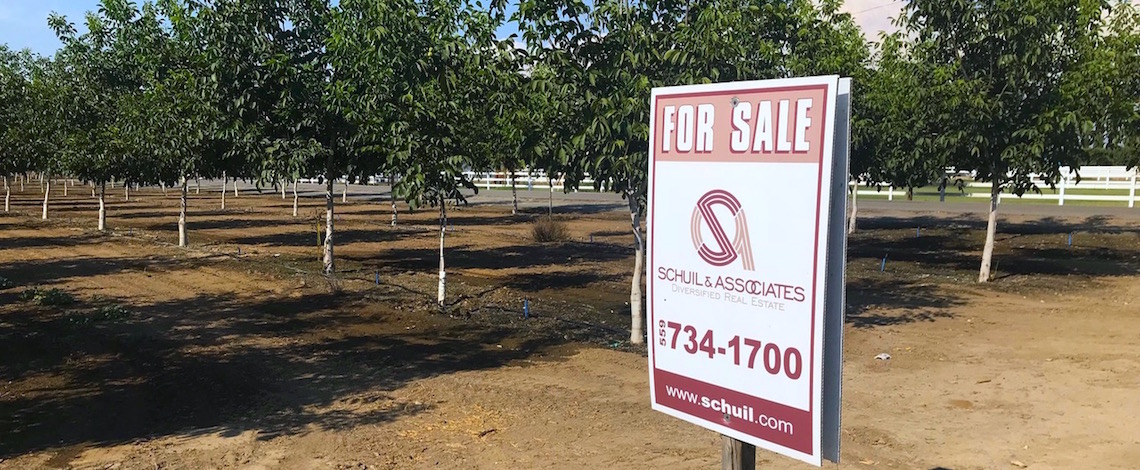On September 16, 2014, Governor Jerry Brown signed into law a three-bill legislative package, composed of AB 1739 (Dickinson), SB 1168 (Pavley), and SB 1319 (Pavley), collectively known as the Sustainable Groundwater Management Act (SGMA). For the first time, California has a framework for sustainable, groundwater management.
SGMA requires governments and water agencies of high and medium priority basins to halt overdraft and bring groundwater basins into balanced levels of pumping and recharge. Under SGMA, these basins should reach sustainability within 20 years of implementing their sustainability plans. For critically over-drafted basins, that will be 2040. For the remaining high and medium priority basins, 2042 is the deadline.
Did you know that this law is already having a big effect on prices for agricultural land, particularly in the areas from Madera County down to Kern County, where some of the most severe over drafting in the state commonly occurs?
“The outlook for California land prices depends on the region and specific differences between properties within the region,” with the land parcels having access to both reliable well water and surface water likely to retain their prices better than those with only well water, according to the report from the European-based bank’s RaboResearch Food & Agribusiness division.
“On average, Southern San Joaquin Valley properties are expected to see the biggest declines in valuations during 2018-19,” states the Rabobank report, referring to Tulare, Kings and Kern counties.
As for Madera and Fresno counties, its been reported that farmers have had to depend heavily on their wells for irrigation, as they have no other water sources to recharge the aquifers under them.
These are the properties that will be most constrained by SGMA implementation. Lower-quality groundwater also limits crop yields, while properties with access to water from irrigation districts operating in Fresno County should be relatively more immune to negative impact.
“Certainly the most attractive properties are the ones with two water sources — surface water and wells. With SGMA, it’s important to have water alternatives to recharge aquifers in the dry years.”
Roland Fumasi, vice president and senior analyst for RaboResearch Food & Agribusiness, stated in an interview that other factors are adding to declining values of Valley ag land, including reduced prices being paid for nut crops, which has curtailed the high demand for nut acreage that was selling big just a few years ago.
Right now, people really aren’t buying properties because they are unsure what’s going to happen. Farmers will need to watch how ag land prices will fluctuate as the various groundwater basins plans are completed and made public.
Check out this article for a deeper look at how ag land prices are already being impacted due to the anticipation of the new SIGMA rules.
